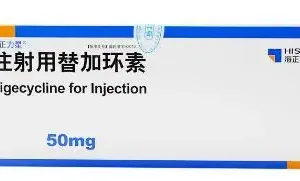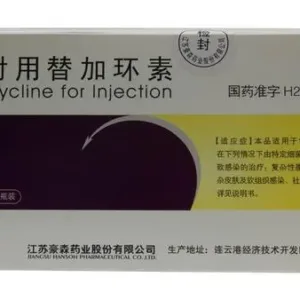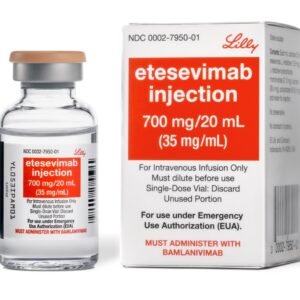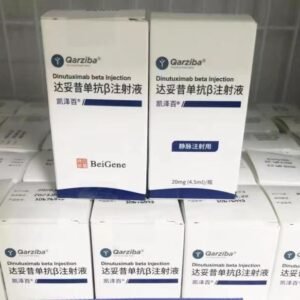Tigecycline for Injection
Effects and efficacy:
Suitable for complicated intra-abdominal infections, complicated skin and skin and soft tissue infections, and community-acquired pneumonia caused by sensitive bacteria in adult patients over 18 years old.
Usage and dosage:
Adults take 100 mg as the first dose, followed by 50 mg once every 12 hours. Each infusion time is 30-60 minutes. The course of treatment is determined according to the severity, site of infection, clinical manifestations, and bacteriological progression. When used to treat complicated intra-abdominal infections and complicated skin and skin and soft tissue infections, the recommended course of treatment is 5-14 days; when used to treat community-acquired pneumonia, the recommended course of treatment is 7-14 days. Dosage for hepatic insufficiency For patients with severe hepatic impairment (Child-Pugh grade C), take 100 mg as the first dose, followed by 25 mg once every 12 hours. Children aged 8-11 years: 1.2 mg/kg once, once every 12 hours; the maximum dose is 50 mg once, once every 12 hours; each infusion time is at least 60 minutes; the course of treatment is 5-14 days. Children aged 12-17 years: 50 mg once, once every 12 hours; each infusion time is at least 60 minutes; the course of treatment is 5-14 days.
Adverse reactions:
If tigecycline is used during tooth development, it may cause permanent tooth discoloration. Headache, back pain, fever, chills, infection, pain, fatigue and shock. Hypertension, hypotension, bradycardia and tachycardia. Nausea, vomiting, lack of appetite, abdominal pain, indigestion, constipation, diarrhea, dry mouth and jaundice. Anemia, leukocytosis, thrombocytosis, thrombocytopenia, prolonged activated partial thromboplastin time, prolonged prothrombin time, eosinophilia, increased international normalized ratio (INR). Increased alkaline phosphatase, amylase, bilirubin, blood urea nitrogen (BUN), creatinine, lactate dehydrogenase, alanine aminotransferase (ALT) and aspartate aminotransferase (AST), peripheral edema, hypoglycemia, hyperglycemia, hypokalemia, hypoproteinemia, hypocalcemia and hyponatremia. Dizziness, insomnia, drowsiness, taste reversal, dyspnea and increased cough. Itchy skin, drug rash, sweating and allergic reactions. Vaginal candidiasis, vaginitis and abnormal leucorrhea. Edema, inflammation, abscess, pain and phlebitis and thrombophlebitis at the injection site. In animal experiments, erythrocytes, reticulocytes, leukocytes and platelets were found to be reduced, which was related to too few bone marrow cells. These changes can be reversed after two weeks of administration.
Drug contraindications:
Allergic to this product is prohibited. It is prohibited during lactation. It is prohibited in late pregnancy. It is prohibited for children under 12 years old. Children should use it with caution. Use with caution if liver function is damaged.
Share:
Products
Our offers
Health Classification
Let us work together to protect precious health
































